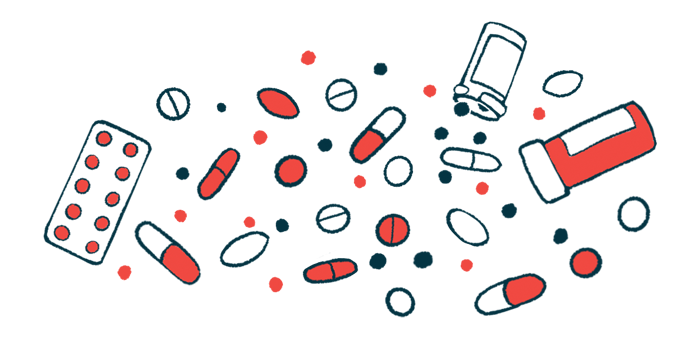Treatment satisfaction higher in patients switching to Orladeyo
Analysis: Therapy well tolerated, associated with low rate of HAE attacks

Preventive treatment with Orladeyo (berotralstat) was associated with improved treatment satisfaction among hereditary angioedema (HAE) patients who had switched from injectable therapies, according to a recent clinical trial analysis.
BioCryst Pharmaceutical’s oral treatment also was well tolerated and associated with low HAE attack rates, as has been observed in previous trial analyses.
“Our findings highlight the importance of adopting an individualized approach to HAE treatment that considers efficacy and safety, as well as the potential benefits of presenting patients with a variety of treatment options,” the researchers wrote. “This approach may positively impact treatment adherence and satisfaction, leading to improved [life quality].”
The BioCryst-sponsored study, “Hereditary angioedema outcomes in US patients switched from injectable long-term prophylactic medication to oral berotralstat,” was published in the Annals of Allergy, Asthma, & Immunology.
In HAE, overproduction of a molecule called bradykinin, which is involved in blood vessel dilation, leads to sudden swelling attacks — the cardinal symptom of the disease.
Patients are treated with long-term prophylaxis (LTP), or preventive therapies, that aim to reduce the frequency and severity of swelling attacks in various ways. Most are given as subcutaneous, (under-the-skin) or intravenous (into-the-vein) injections multiple times per week up to once per month.
Orladeyo, a daily oral therapy, earned its approval in the U.S. for HAE patients, ages 12 and older in 2020, which was closely followed by similar approvals in Europe and Japan. The medication works by suppressing kallikrein, an enzyme that regulates bradykinin production, thereby preventing bradykinin levels from getting too high and triggering an attack.
Convenience, quality of life benefits with Orladeyo
This oral treatment is thought to potentially offer greater convenience and quality of life benefits relative to injectable therapies for long-term use. A previous survey conducted by BioCryst prior to Orladeyo’s approval indicated that while a vast majority of HAE patients liked their current LTP, they would prefer an oral treatment.
The global, open-label APeX-S trial (NCT03472040) evaluated the long-term safety and effectiveness of once daily Orladeyo in 387 patients with HAE types 1 and 2, ages 12 and older.
Trial results indicated the therapy at its approved dose (150 mg) was well tolerated and led to sustained reductions in HAE attacks.
Now, researchers reported findings from a subset of 34 APeX-S participants in the U.S. who had switched to Orladeyo from a previous injectable therapy. These patients were mostly women (64.7%) and white (97.1%), with a mean age of 38.
The most common injectable therapy being used prior to the trial was Takhzyro (lanadelumab; 61.8%). Others included subcutaneous (Haegarda) or intravenous (Berinert, Cinryze, Ruconest) C1 esterase inhibitors (C1-INH).
Most patients (76.5%) discontinued their injectable therapy a median of 23 days after initiating Orladeyo in the trial, whereas 23.5% had stopped earlier, a median of 12 days before starting Orladeyo. Participants used Orladeyo for a median of nearly a year.
In general, the switch from injectable therapies to Orladeyo was well tolerated, with safety findings similar to previous clinical trial data.
The most common treatment-emergent side effects were vomiting, diarrhea, and upper respiratory tract infections, each reported in four people. No serious side effects occurred, and no patients discontinued treatment due to adverse events.
Efficacy findings in this patient subgroup also were similar to analyses from the overall APeX-S study population, with HAE attacks remaining well controlled. Median monthly attack rates were zero in the year following the switch from injectable therapies, with comparable efficacy rates when patients were subdivided by type of prior therapy.
Overall, patients remained attack-free for 96.6% of days on Orladeyo, and the need for on-demand medications for active swelling attacks declined.
Treatment satisfaction was evaluated with the Treatment Satisfaction Questionnaire for Medication, which assesses four domains — global satisfaction, convenience, safety, and effectiveness, each on a 100-point scale where higher scores reflect better satisfaction.
Results showed treatment satisfaction improved a year after the switch to Orladeyo. Specifically, global satisfaction scores rose by 19.16 points and convenience scores by 35.35 points.
Patients say Orladeyo as ‘effective and tolerable’ as prior therapy
Efficacy and side effect scores remained stable over the year, indicating that “patients perceived [Orladeyo] to be as effective and tolerable as their prior LTP,” the team wrote.
Similar trends were observed in patients who specifically switched from Takhzyro. In patients who switched from subcutaneous C1-INH, gains also were observed in terms of safety and effectiveness, according to scientists.
However, these treatment satisfaction improvements may be prone to bias, since patients who enrolled in the trial were willing to stop using their existing therapies.
“As such, the patients in this study may not necessarily generalize to the entire population of LTP users in the US,” the researchers wrote.
Nevertheless, “[Orladeyo] as a once-daily, orally administered LTP may offer patients a convenient treatment option for improved adherence and long-term effectiveness,” the team wrote.







